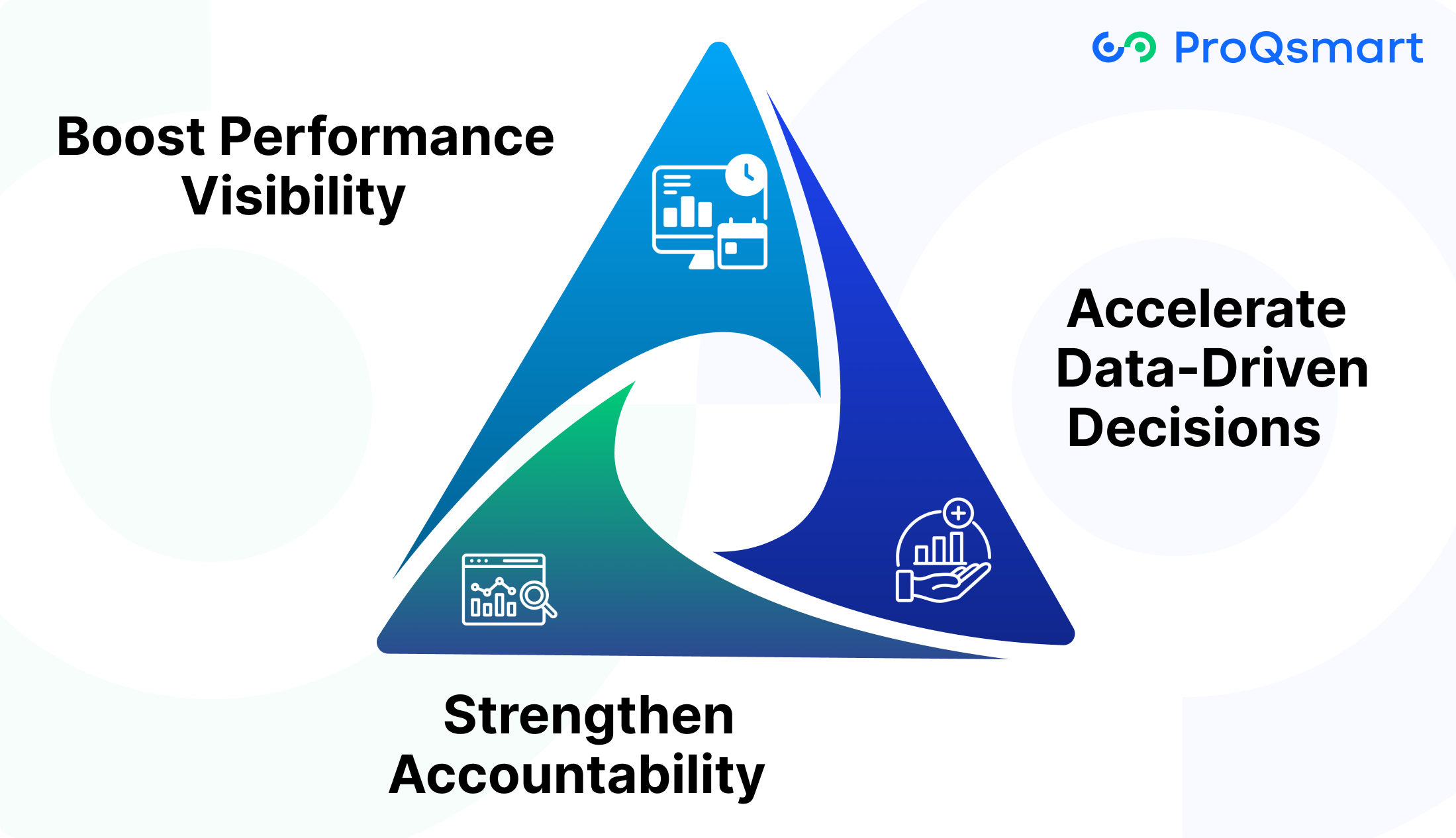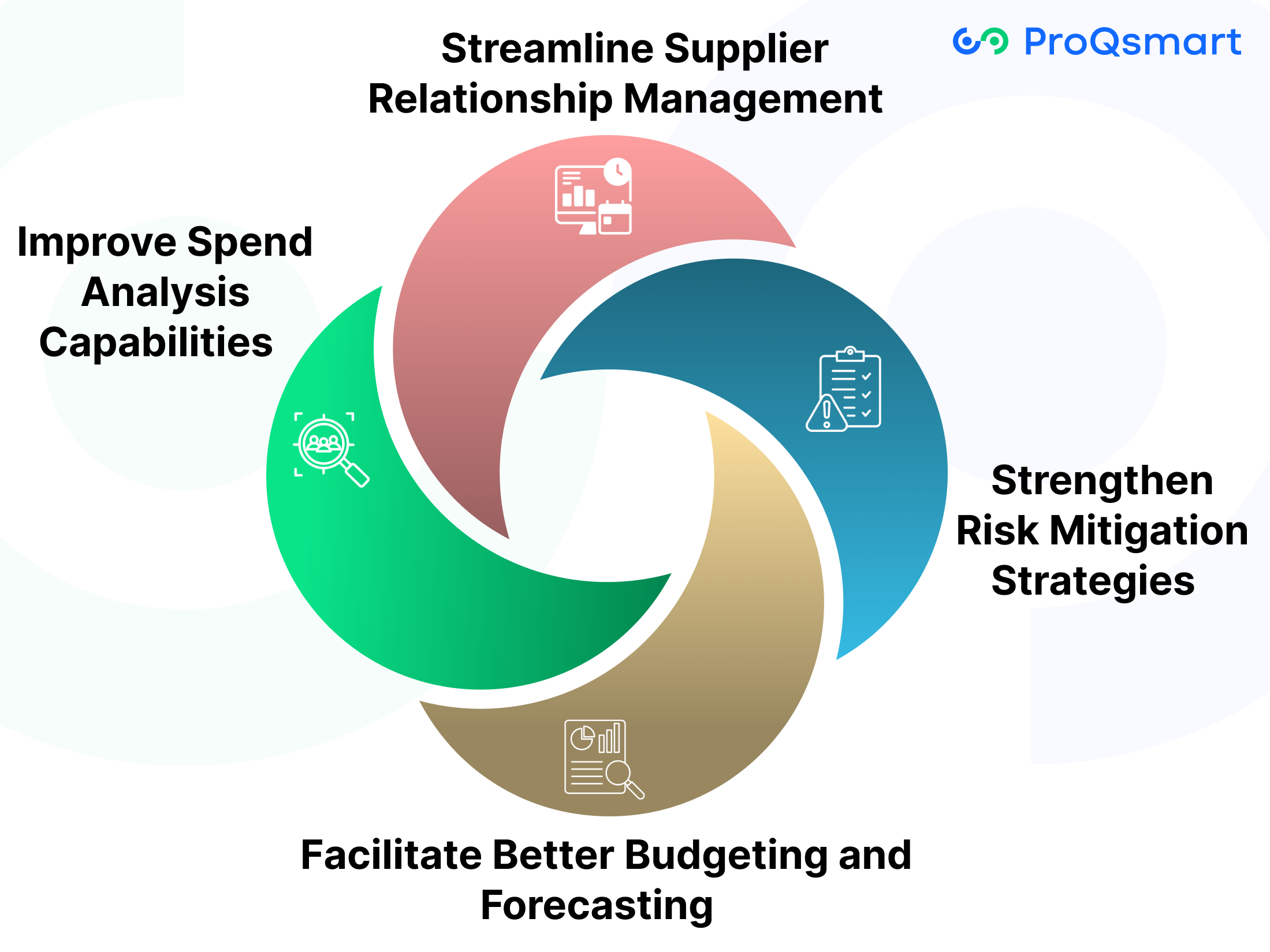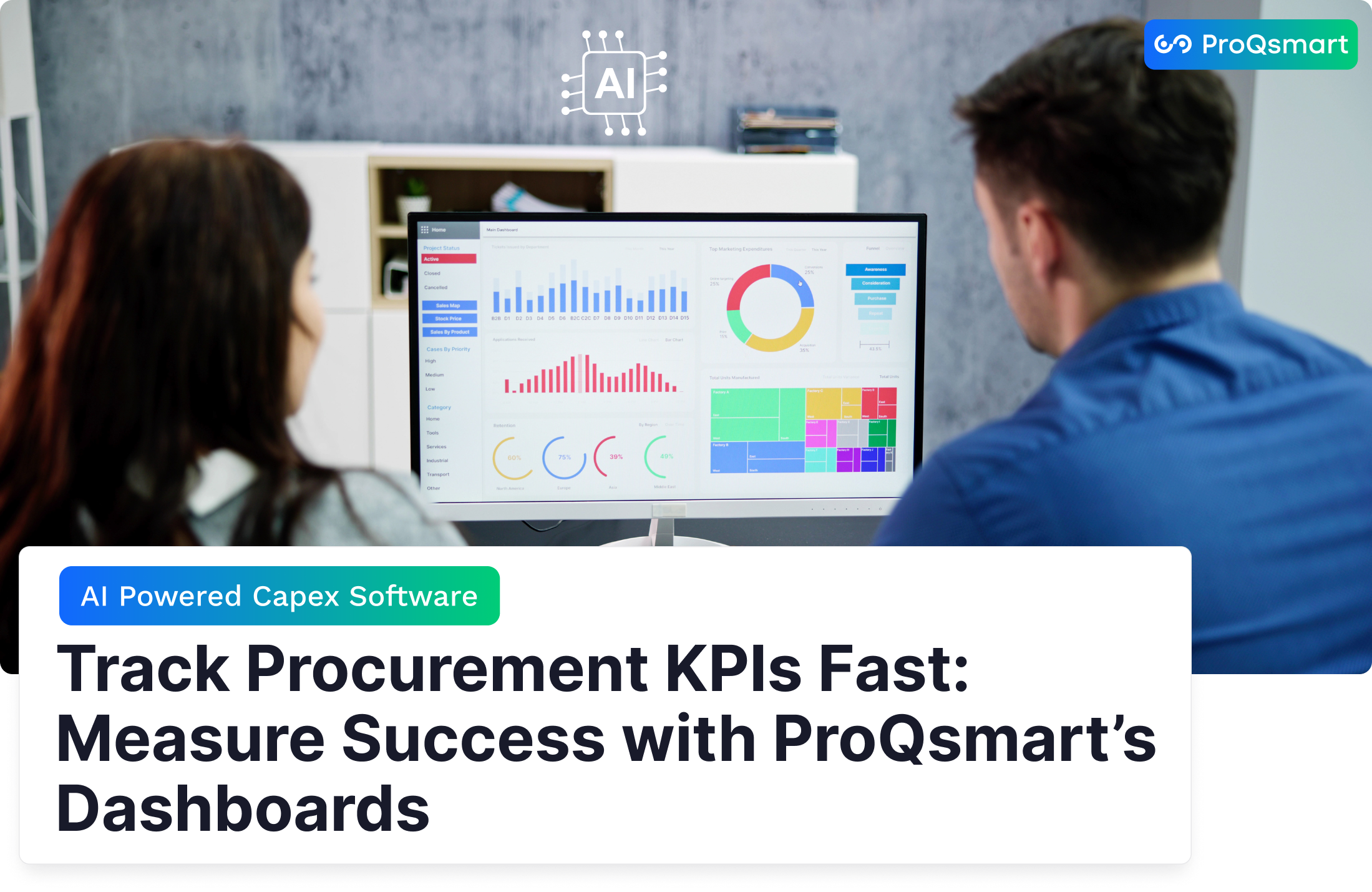In procurement, measuring success is crucial for optimizing operations and aligning strategies with business goals. Key Performance Indicators (KPIs) play a pivotal role in this process, providing insights into the efficiency and effectiveness of procurement activities. By tracking the right KPIs, organizations can identify areas for improvement, reduce costs, enhance supplier relationships, and ensure compliance with regulatory standards.
Effective KPI management involves not only selecting relevant metrics but also ensuring they are easily accessible and understandable. This is where procurement dashboards come into play, offering a centralized platform to monitor and analyze these critical metrics in real-time. With the ability to integrate with procurement software, these dashboards can automate reporting, forecast trends, and provide actionable insights that drive strategic decision-making.
In the following sections, we will delve into the core functionalities, benefits, and best practices for leveraging procurement KPIs and dashboards to maximize their value and transform procurement processes.
Why Track Procurement KPIs?

As procurement leaders focus on becoming more efficient and continuing their journeys towards operational excellence, tracking procurement KPIs becomes necessary. By closely monitoring these metrics, you can evaluate the effectiveness of procurement processes, identify areas for improvement, and ensure alignment with organizational goals.
Without accurate measurement, critical elements such as supplier performance, spending patterns, and material quality can become obscured, leading to inefficiencies and potential risks. By leveraging insights from KPIs, businesses are better equipped to make informed decisions, optimize their strategies, and protect competitive margins.
1. Boost Performance Visibility
Key metrics act as a dashboard, painting a simplistic view of the broader performance of procurement. These include cost savings, supplier reliability, delivery time and compliance rates, etc.
Dashboards are a powerful way to create this visibility, turning complex supplier performance data and spending patterns into an easy-to-consume visual landscape. Dashboards that track maverick spending, for example, help align budgets to reduce that kind of spending.
Frequent updates to these dashboards are key for keeping a real-time view of procurement activities on hand and making quick interventions as necessary, almost as if they were programmed.
2. Accelerate Data-Driven Decisions
With data analytics, decisions can be made more quickly and intelligently. Up-to-date information enhances supplier negotiations and accelerates vendor onboarding, allowing you to get better offers.
By tracking trends like procurement ROI (aiming for 100% not 81%), teams can proactively plan to meet long-term strategic objectives. Platforms such as ProQsmart make this easier by leveraging artificial intelligence to gather real-time data.
They streamline procurement processes and unlock unparalleled transparency, making sure each dollar spent gets the most value possible.
3. Strengthen Accountability
Assigning ownership of KPIs within teams to specific individuals fosters accountability. Performance dashboards track both individual and group progress, making sure everyone is on the right track to meet the procurement goals.
Creating regular feedback loops with stakeholders fosters a culture of accountability. Simultaneously, tracking tools such as ProQsmart evaluate supplier dependabilityand substitute inadequate performers, improving supply chain resilience.
Essential Procurement KPIs to Monitor
To manage the performance of procurement operations, these are the key procurement KPIs you should be monitoring to effectively manage and improve efficiency. Together, these metrics help you surface the most actionable insights into the efficiency, cost-effectiveness, and overall health of your organization’s procurement strategies.
Aligning KPIs to organizational goals not only focuses procurement efforts on supporting the larger business objectives but promotes a culture of continuous improvement. Below are key areas to monitor:
1. Measure Cost Reduction Achievements
Monitoring savings achieved is key. Establish essential, defined KPIs to measure financial value. For example, find your Procurement ROI by dividing your annual cost savings by your annual procurement costs.
Compare new savings with historical spending trends and use saved data from historical benchmarks. For instance, tracking Purchase Price Variance (PPV) manages expenses more effectively by pinpointing price fluctuations for goods being acquired.
Smart PPV management will improve efficiency of spending and bottom-line profitability.
2. Evaluate Supplier Performance Quality
Assessing suppliers is critical for maintaining reliability. Key indicators include delivery accuracy, defect rates, and Supplier Availability rates. A high availability rate signals dependable suppliers, crucial in adapting to shifting consumer demands.
Using ProQsmart’s AI-powered tools, you can automate performance monitoring, ensuring suppliers consistently meet contract terms.
3. Monitor Compliance Adherence
Compliance KPIs protect your organization’s integrity. Monitor policy compliance rates. Policy compliance can be tracked through various metrics, including regulatory compliance rates.
ProQsmart’s underlying workflows and auditable data make compliance management easy, lowering risk and raising accountability.
4. Analyze Procurement Cycle Time
Cycle time, from requisition to delivery, has a direct correlation to efficiency. For example, reduced Purchase Order Cycle Times make procure-to-pay processes more efficient, reducing costly errors and rework.
Dashboards on platforms such as ProQsmart can quickly show trends, allowing teams to establish achievable reduction goals.
5. Track Purchase Order Accuracy
Improving accuracy keeps operations humming. Track things such as the quality of your supplier’s communication and supplier order fulfillment. A high Purchase Order Coverage rate or over 95% means that procurement is trusted.
6. Assess Contract Management Effectiveness
Monitor contract compliance and performance with contract dashboards used alongside dashboards that track overall spend. ProQsmart automates contract-level reviews, ensuring contracts are in alignment with procurement goals.
This automation makes capital expenditure sourcing easier overall.
Common Challenges in KPI Tracking
Measuring procurement KPIs doesn’t just help you stay focused on the fundamentals. These are just a few examples, but we can dive deeper into supplier performance, spending patterns, and material quality control. Yet, a number of significant challenges can come into play, making the process stressful and hampering effective and timely decision-making.
It may seem like a daunting task, but overcoming these challenges starts with intention, backed by the right technology and industry best practices.
Data Lag and Manual Updates
Not only do manual and disconnected tracking systems create lag times with data updates, affecting the accuracy of overall procurement reporting. For instance, in industries such as electronics manufacturing, where lead times can extend for months, they are at higher risk with data lag.
Automating data collection and updates can greatly alleviate these lag times. Conducting routine audits of procurement data is key to catching mistakes before they turn into problems like wasteful, unauthorized spending.
Companies can manage against this risk by measuring things such as Spend Under Management (SUM). Real-time tracking capabilities allows procurement processes to be automatically aligned with set budgets, allowing for smoother and more efficient operations.
Overabundance of Metrics
Keeping unnecessary metrics creates extra stress for your teams while watering down the focus on what matters most. Other important KPIs include supplier performance, delivery time, total cost of procurement, and contract adherence.
Focusing on the metrics most directly linked to your strategic objectives makes reporting easier and increases transparency and clarity for stakeholders. Prioritizing cost control metrics when freight rates are volatile, for instance, provides timely and actionable insights into procurement expenditures.
Restricted Data Accessibility
Limited access to data makes it difficult to track KPIs. Centralized procurement dashboards, like ProQsmart, solve this by giving every stakeholder access to real-time visibility.
Equipping team members to properly use these tools increases confidence, encourages collaboration, and leads to better decisions based on the best information.
Difficulty in Data Interpretation
Processing large or complex data sets can prove time-consuming and difficult to interpret, resulting in overlooked insights. Visual aids, simplified reporting, and cross-functional collaboration allow teams to get a much better vantage point of how procurement is performing.
Tools such as ProQsmart provide the transparency and visualization, making these complexities understandable and actionable, allowing for smarter, more proactive long-term planning.
How Dashboards Enhance Procurement Value

Dashboards bring all this real-time data together in one easy-to-read interface. This unlocks opportunities for procurement teams to focus on what matters most, streamlining decision-making and optimizing processes with actionable insights.
These tools provide real-time monitoring of key KPIs such as Spend Under Management, Compliance Rate, and Supplier Performance Score. Great dashboards create a holistic picture of your operational health. They can highlight areas of inefficiency, such as the typical 40% to 50% of total procurement cycle time often lost due to supply chain disruptions.
Beyond that, dashboards identify a myriad of cost-saving opportunities, increasing overall ROI.
Improve Spend Analysis Capabilities
Dashboards take spend analysis a step further by helping you categorize your expenses into primary categories like direct materials, indirect purchases, and capital expenditures. They enable procurement teams to quickly visualize spending patterns, find opportunities to save costs, and re-allocate budgets effectively.
Take Spend Under Management as an example—tracking this metric enables you to identify areas of waste and help strengthen your organization’s financial health. By consistently reviewing data to adjust strategies, budgets can focus on what will best serve the organization and its objectives.
Streamline Supplier Relationship Management
Dashboards give procurement teams access to robust supplier performance data, including delivery times, product quality, and more, which helps build collaborative relationships. Metrics such as Supplier Performance Score and Compliance Rate foster cooperation, allowing for proactive engagement.
Tools such as ProQsmart help simplify communication, automate workflow, and enhance transparency, creating better trust and efficiency.
Strengthen Risk Mitigation Strategies
Procurement dashboards help organizations spot risks by monitoring key metrics such as contract adherence, vendor dependency, and fluctuations in the marketplace. Proactive risk management through real-time monitoring enables you to develop contingency plans that are more data-driven, helping you reduce the impact of disruptions.
Facilitate Better Budgeting and Forecasting
Real-time and historical information is crucial for accurate forecasting. Dashboards make this easy by automating updates and ensuring that procurement is working towards organizational budgets. This frees up procurement teams to focus on more strategic long-term planning.
Integrating Procurement Dashboards
Procurement dashboards are a command center to track, analyze, and improve the efficiency and effectiveness of the procurement process. Integrating procurement dashboards with your existing systems increases operational efficiency. It eliminates redundancies and inefficiencies across the entire supply chain.
It provides actionable insights on a real-time basis. With 40% to 50% of procurement cycle time often lost to supply chain inefficiencies, seamless integration is no longer optional—it is essential. Through connected data management and reporting, procurement teams are empowered to act quickly and confidently to drive decisions that support organizational objectives.
Connecting with ERP Systems
Key data points to sync include:
-
Purchase orders and invoices
-
Inventory levels and stock movements
-
Supplier profiles and contract terms
Regular updates are necessary to maintain consistency, keeping procurement data across platforms accurate and dependable. With the right tools, like ProQsmart, the integration process becomes much easier.
It links directly to your current database without ever duplicating data, so it saves you hours of precious time.
Linking with CRM Platforms
Integrating procurement dashboards with CRM platforms helps organizations manage supplier relationships more effectively by providing better visibility into supplier performance and communication history. Not only does sharing supplier data across systems strengthen relationships, it benefits your organization by driving greater transparency.
Useful CRM features include:
-
Supplier contact management
-
Communication tracking and follow-ups
-
Performance metrics and feedback loops
ProQsmart’s AI-driven tools take this partnership a step further, providing real-time collaboration, supplier performance monitoring, and compliance tracking to strengthen these connections.
Ensuring Data Consistency
Ensuring data continuity means utilizing consistent data formats, proactively auditing data on a regular basis, and having strong data tools. ProQsmart automates workflows and ensures compliance with auditable sourcing data.
Conclusion
By implementing and tracking procurement KPIs, organizations can drive smarter decisions and achieve stronger results. These metrics offer a clear view of procurement performance, enabling teams to identify inefficiencies, optimize supplier relationships, and reduce costs. A well-designed dashboard serves as the cornerstone for effective KPI management, consolidating critical data into one accessible interface. It provides real-time insights, highlights trends, and ensures teams remain focused on their strategic goals.
With enhanced transparency, dashboards empower organizations to eliminate guesswork and build a competitive edge in an ever-evolving marketplace. By leveraging the right technology, even the most complex procurement processes become manageable. Teams gain clarity and actionable insights that align procurement strategies with core business objectives while increasing operational efficiency.
Procurement dashboards are not just tools—they are strategic enablers that pave the way for smarter, more efficient outcomes. To discover how ProQsmart can help you unlock the full potential of your procurement processes, schedule a personalized demo today.




